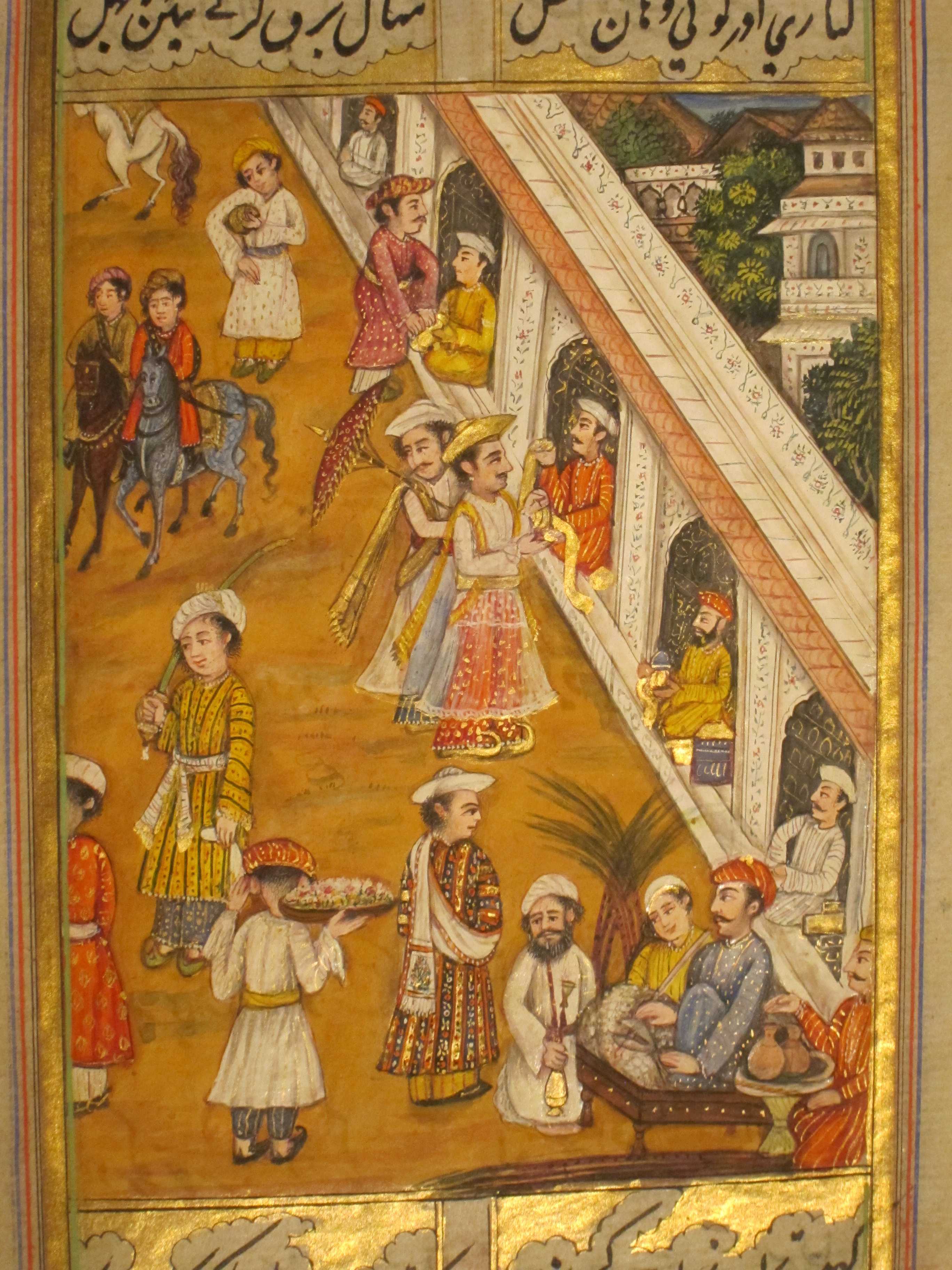FWP:
SETS
COMMERCE: {3,3}
JALVAH: {7,4}
From the first line, we can tell only that glory/appearance is 'offering' or 'presenting' coquetry. The multivalence of ʿarẓ karnā (see the definition above) makes it impossible to tell where the verse is going. It's even deliberately confusing, since most of the meanings involve humility and submissiveness, which are not at all what we expect from the beloved or her glory/appearance. Under mushairah performance conditions, of course, we'd then have to wait as long as conveniently possible before hearing the second line.
Only when we finally hear it do we suddenly realize that the 'offering' being made in the first line was a commercial proposition, like an 'offering' of stock in a company, or the 'offering' of merchandise. This is piquant in itself, since Ghalib doesn't use all that much commercial imagery. There's also the pleasure of the meaning of ʿarẓ as 'breadth, width', which makes the coquetry sound like something that can be spread out like a fine fabric for display and sale; moreover, there's added pleasure of the hovering homonym arz , meaning 'price, value, quantity', which in oral performance would be indistinguishable from ʿarẓ . (See the definitions above.)
Thus no humility on the beloved's part is involved, but simply a shrewd business transaction. And in the bazaar (our borrowed rendering of bāzār ) here come the eager customers, ready to purchase the 'offering' with their own stock-in-trade: their 'life-surrendering'. To our minds, the bargain is wildly unequal: what the beloved offers is a renewable resource that she can well afford to spare; what the lover pays for it is no less than everything. Is it even possible for a customer to 'buy' something that involves the customer's own death? If he's not around to take possession of it, can he really be said to have 'bought' it and to 'own' it?
The second line is given by Arshi with an iẓāfat after roz ; this is the primary reading. But it's also metrically possible to read the line without the iẓāfat , as Bekhud Dihlavi does. Both readings make enjoyable kinds of connection with the first line. A bazaar might be held only on certain days, or only once a year, as part of some special festival or event. So this bazaar might be a special event-- the beloved so rarely makes this irresistible offering, and the buyers are rushing to take advantage of it. Or it might be a constant, daily occurrence (on the secondary reading)-- there's no end to the rush of buyers, day after day they come in search of such an 'offering'.
The relatively uncommon phrase jāñ-sipārī finds its supreme, most amusing moment in {95,1}.
An illustration from Id ki tahniyat, Lucknow, 1822 (New York Public Library), generously provided by Maliha Noorani (April 2013):

Nazm:
That is, it's the day of the bazaar of the lover's life-surrendering-- that the glory/appearance of the beloved is offering the merchandise of coquetry, and asking who is a buyer of it. (177)
== Nazm page 177